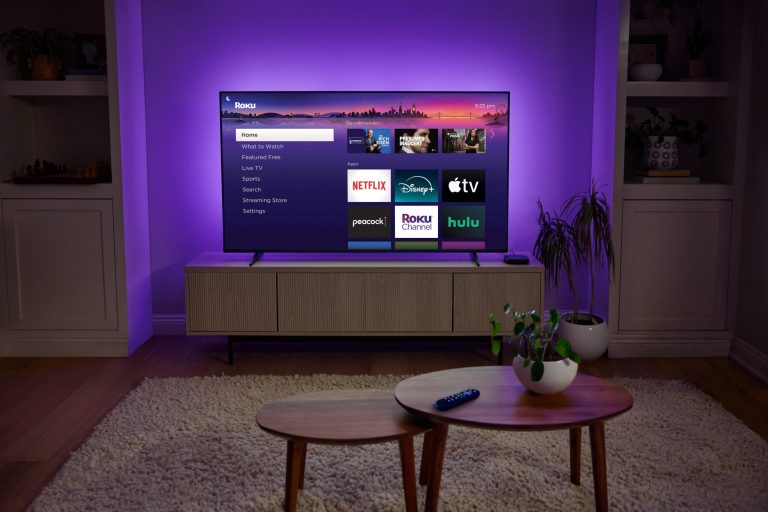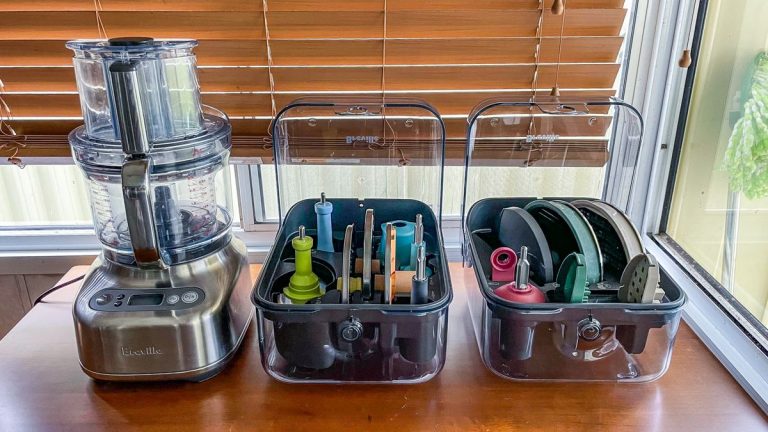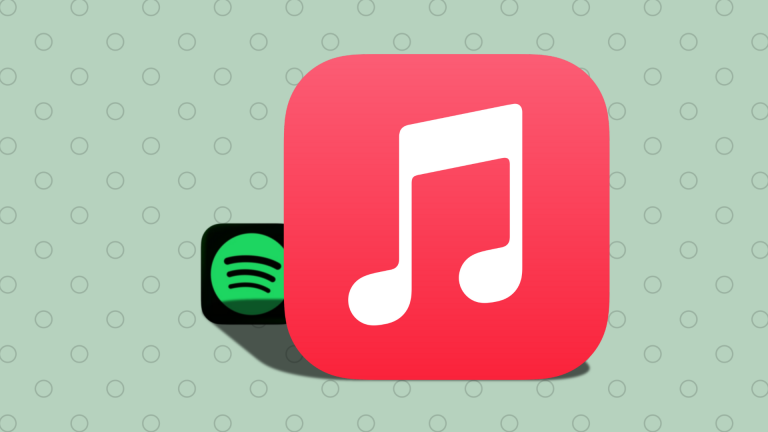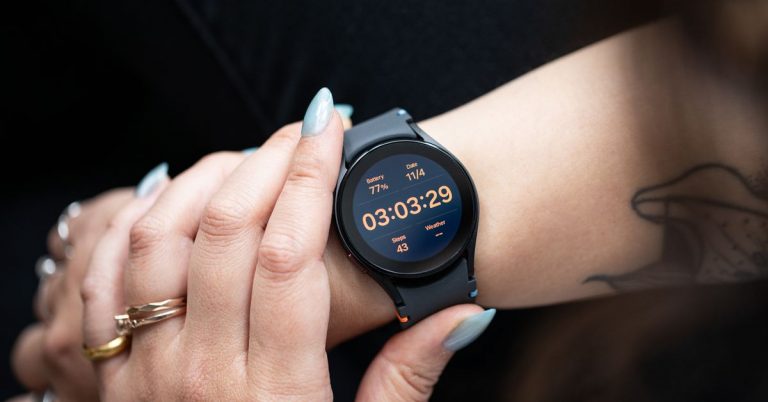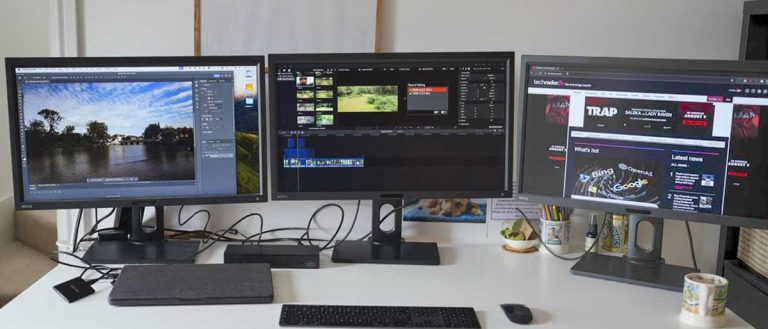Samsung Galaxy Z Fold 6 vs Google Pixel Fold: Which foldable is best?
Samsung recently launched its latest foldable smartphone, the Galaxy Z Fold 6. While we gave the Samsung Galaxy Z Fold 6 a solid four-star rating, last year’s Pixel Fold achieved just 3.5-stars.
With this in mind, we’ve compared both the specs and our reviews of the two foldables so you can determine which one is better suited for you.
Keep reading to learn the difference between the Galaxy Z Fold 6 and Pixel Fold.
Design
Aside from both being book-style foldables, there are quite a few notable differences between the designs of Galaxy Z Fold 6 and Pixel Fold. The Galaxy Z Fold 6 is notably lighter at 239g compared to the Pixel Fold’s weighty 283g, although both have the same thickness when unfolded at 12.2mm.
The Z Fold 6 also sports a new design from its predecessors with squared corners, flattened sides and a matte finish to hide pesky fingerprint marks. In comparison, the Pixel Fold features thick and more rounded bezels.
Finally, the Z Fold 6 has a slightly higher IP-rating of IP48 compared to the Pixel Fold’s IPX8 rating, however although both are water resistant when submerged in up to one metre of water for up to 30 minutes, neither offer complete protection from dust or sand.
Screens
Both the Z Fold 6 and Pixel Fold have a 7.6-inch interior panel but differ with their outer displays. The Pixel Fold has a smaller 5.8-inch FHD Plus panel which boasts a 120Hz refresh rate, OLED technology and 1200 nits of peak brightness whereas the Z Fold 6 has a larger 6.3-inch OLED display fitted with HD Plus, a 120Hz refresh rate and can reach a massive 2600 nits peak brightness.


Both internal panels also have a 120Hz refresh rate and are OLED-powered which means you can expect vibrant colours and deep blacks, making the two handsets equally ideal for streaming content and gaming.
It’s also worth noting that the two internal panels are both affected by the same discrepancy: the crease in the middle. In his review of the Pixel Fold, Mobile Editor Lewis Painter said the notable crease is constantly noticeable, in fact he went as far as to say this “ruined the experience” of the phone and is worsened by the fact the Pixel Fold doesn’t unfold completely flat.
Similarly and much like its predecessors, the crease that runs down the middle of the screen in the Z Fold 6 is still very much present, although Lewis said in his review that you “might get used to the sensation of running your finger across the crease”.

Cameras
Both the Galaxy Z Fold 6 and Pixel Fold each have a total of five cameras and boast dedicated AI features to help enhance captured images.
The Pixel Fold has a 48MP main lens that’s supported by a 10.8MP ultrawide and 18.8MP 5x telephoto at its rear, although the latter can utilise Google’s Super Res Zoom technology to reach levels of 20x.
Naturally we found the main lens is the best all-rounder out of the three, and found it’s capable of delivering pin-sharp detail and vibrant colour that isn’t as saturated as Samsung images. We also found the skin tones appear more natural and true-to-life than some competing candybar flagships, let alone foldables.


Also on the Pixel Fold you will find a 9.5MP selfie camera on the external display and a fairly weak 8MP lens embedded within the bezel of the interior panel.
The Z Fold 6’s rear trio consists of a 50MP wide, 12MP ultrawide and a 10MP telephoto with 3x optical zoom. Much like the Pixel Fold, the star of the show is the main 50MP lens which allows for crisp shots with balanced lighting, although it does retain the flagship Samsung vibrancy.
In fact, the camera set up is unchanged to its predecessors, the Z Fold 4 and Z Fold 5 so naturally we found it trails behind its recent foldable competitors such as the Razr 50 Ultra.


You’ll also find a 4MP under-display camera which is designed purely for video calls and a 10MP selfie lens on the external panel, which we found offers a decent image quality.
Performance
From a sheer performance perspective, the Z Fold 6 triumphs over the Pixel Fold which is mainly due to their respective chipsets. While the Pixel Fold sports the Tensor G2 chipset which powered the 2022 Google Pixel 7 lineup, the Z Fold 6 boasts the exclusive Snapdragon 8 Gen 3 for Galaxy, which is found in the premium Galaxy S24 Ultra.
Although speed and efficiency is undoubtedly better in the Z Fold 6, as shown in our Geekbench 6 single core and multi core benchmark tests, it’s worth pointing out that the Tensor G2 (and even the newer G3) focuses more on AI processing power.
Speaking of AI prowess, the Pixel Fold boasts numerous AI-powered tools across the handset and especially with its photo editing ability. There’s the Magic Eraser which accurately removes people and objects from backgrounds plus Magic Unblur to refocus blurred images. Aside from the photo editing tools, the Pixel Fold is packed with extra features such as Now Playing which automatically notes down songs you hear throughout the day.
Even so, the Z Fold 6 boasts its own AI toolkit with Samsung’s Galaxy AI which includes the brand new Drawing Assist and AI Portrait Studio which launched alongside the Galaxy Z Fold 6, plus the tools that rolled out with this year’s S24 series, like photo editing, Live Translate and Circle to Search.
Battery Life
The Z Fold 6’s battery remains unchanged from its predecessor with a 4400mAh capacity and a relatively slow 25W charging, whereas the Pixel Fold boasts a slightly higher 4821mAh cell alongside a 30W charging speed.
The difference between the two is negligible, as we found the Pixel Fold took 94 minutes to charge from 1-100% while the Z Fold 6 took exactly 90. While 60-minutes of Netflix streaming reduced both handsets’ power by 8%, 30-minutes of gaming discharged the Z Fold 6 battery by 10% compared to the Pixel Fold’s 6%.
Price
The Galaxy Z Fold 6 has a slightly pricier RRP of £1799/$1899.99 compared to the Pixel Fold’s £1749/$1799. Even so, as the Pixel Fold is older it’s not unusual to see deals for the handset.
Verdict
Boasting a newer processor, powerful speeds and a sleek new design, if you’re keen to try out a book-style foldable then the Galaxy Z Fold 6 is the better choice.
If a strong camera setup is important to you in a smartphone, then it’s worth keeping in mind that the Pixel Fold does boast the better camera hardware, produces more true-to-life images and is fitted with the Google AI toolkit. Even so, we’d still recommend opting for the Pixel 8 Pro instead of the Pixel Fold, as it’s much cheaper and runs on a later chipset.
Source: www.trustedreviews.com

